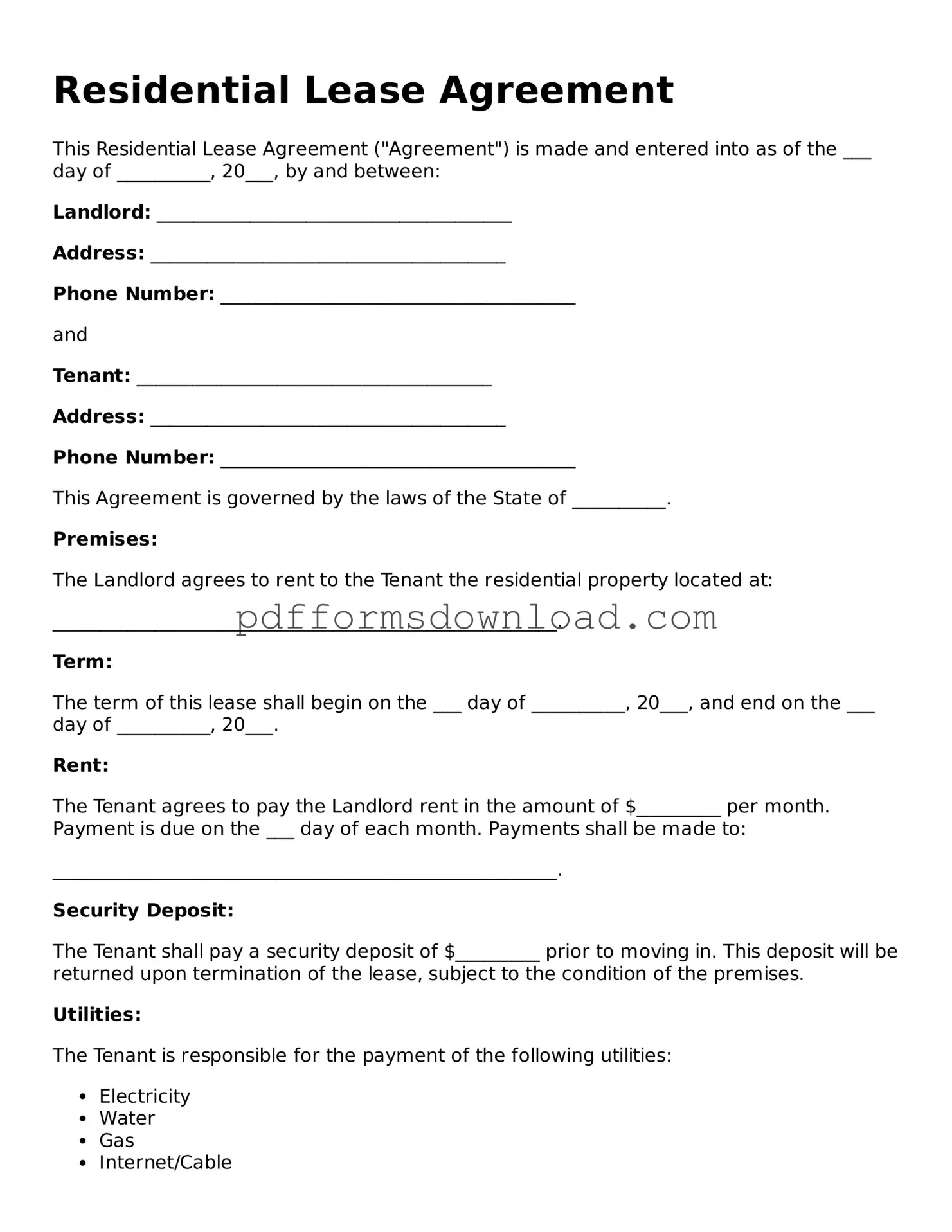What is a Residential Lease Agreement?
A Residential Lease Agreement is a legally binding contract between a landlord and a tenant. It outlines the terms under which the tenant can occupy a residential property. This document typically includes details such as the rental amount, duration of the lease, and the responsibilities of both parties. Understanding this agreement is crucial for both landlords and tenants to ensure a smooth rental experience.
What should be included in a Residential Lease Agreement?
Essential elements of a Residential Lease Agreement include the names of the landlord and tenant, the property address, the lease term (start and end dates), rent amount, security deposit details, maintenance responsibilities, and rules regarding pets or smoking. Additionally, the agreement should address what happens if either party breaks the lease. Clarity in these areas helps prevent misunderstandings later on.
How long is a typical lease term?
Lease terms can vary widely. Most commonly, leases are signed for one year, but they can also be month-to-month or for shorter or longer periods. The choice of lease duration often depends on the preferences of the landlord and tenant. A longer lease may provide stability for both parties, while a shorter lease offers flexibility.
Can a landlord increase rent during a lease?
Generally, a landlord cannot increase rent during the lease term unless the lease agreement explicitly allows for it. Most leases will specify the rent amount for the duration of the lease. However, once the lease expires, the landlord may choose to raise the rent for a new lease term. It's important for tenants to read their lease carefully to understand the terms regarding rent increases.
What is a security deposit and how is it used?
A security deposit is a sum of money collected by the landlord at the beginning of the lease. This deposit serves as protection for the landlord against potential damages or unpaid rent. At the end of the lease, the landlord must return the deposit, minus any deductions for damages or unpaid rent, in accordance with state laws. Tenants should document the condition of the property before moving in to avoid disputes over the security deposit later.
What happens if a tenant wants to break the lease early?
If a tenant wishes to break the lease early, they should first consult the lease agreement. Most leases include a clause detailing the consequences of early termination, which may involve paying a penalty or forfeiting the security deposit. Communication with the landlord is key; sometimes, landlords may agree to negotiate an early termination under certain conditions.
Are there any restrictions on pets in a lease?
Many Residential Lease Agreements include specific clauses regarding pets. Some landlords may allow pets with an additional pet deposit or fee, while others may prohibit pets altogether. It is essential for tenants to review the pet policy in the lease before signing. Understanding these rules can help avoid conflicts and ensure compliance with the landlord's expectations.
What rights do tenants have under a lease agreement?
Tenants have several rights under a lease agreement, including the right to a habitable living environment, privacy, and the return of their security deposit. Landlords are typically required to maintain the property and make necessary repairs. If a tenant feels their rights are being violated, they should document the issues and communicate with the landlord to seek resolution.
Can a lease be modified after it has been signed?
Yes, a lease can be modified after it has been signed, but both parties must agree to the changes. Any modifications should be documented in writing and signed by both the landlord and tenant. Verbal agreements may not be enforceable, so it is best to keep all changes formal and documented to avoid future disputes.
